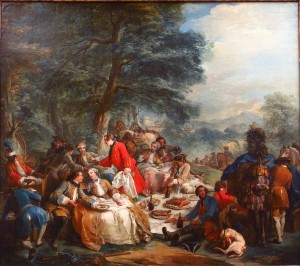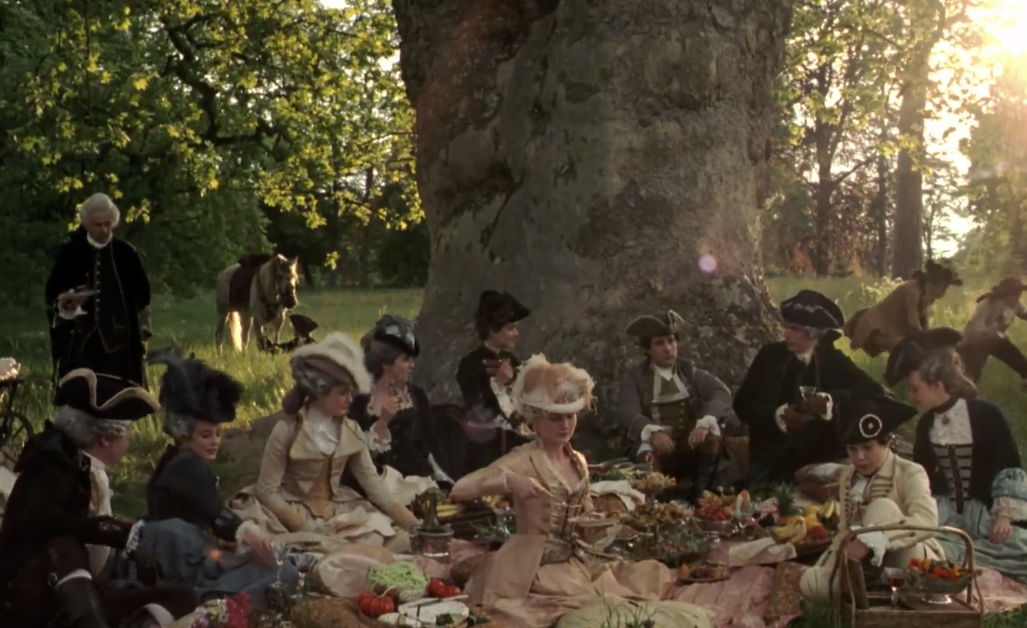Coppola’s picnic in Marie Antoinette is a halt on the hunt. Usually, these meetings are informal, as recommended by Brillat Savarin in The Psychology of Taste. They are inspired by paintings of Jean-Antoine Watteau, Nicolas Lancret, Charles Van Loo, and others.

Carle Andre van Loo. The Picnic after the Hunt [Halte de Chasse] (1737)
The food is unimportant to Coppola. The elegant costumes, however, won several awards for the designer Michael Canonero.
See Sofia Coppola’s Marie Antoinette (2006). Screenplay by Sofia Coppola based on Antonia Fraser’s Marie Antoinette; The Journey. London: Weidenfield and Nicolson, 2002; Jean-Anthelme Brillat-Savarin. The Psychology of Taste (1825). Edited and Translated by Fayette Robinson, 1854.
*Brillat-Savarin distinguishes between two aspects of the halt on the hunt; the first among the tired hunters and the second when the ladies arrive with food and wine expecting to be entertained. For the first halt, the hunters’ meal is simple: cold white wine and snack on bread, cold chicken, and Gruyere or Roquefort Coming. For the second, there are “pâtés de Perigord, a turkey with transparent jelly, salad. With cold champagne, the mood turns festive; “all laugh, jest, and are happy,” making it among the best meals, an “emanation of heaven.” Salon dining is wonderful and elegant, Brillat Savarin affirms, but “the halt” provides vivacity that no salon dining room can match.”

